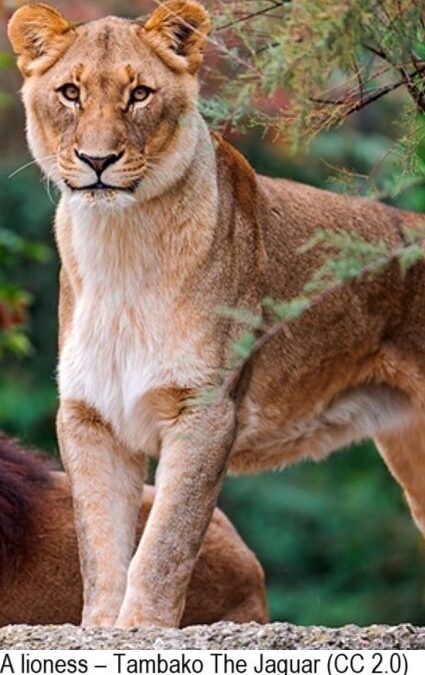At least five surfaces on the female lion are adaptively conspicuous, helping co-hunters to monitor each other without being spotted by prospective prey.

Prof. Mumblebard claims: “The female lion is a simple case of cryptic colouration in which a uniform brownish coat hides this predator from its prey against a dull background such as brown grass.”
Robin and the Honey Badger respond: “In the lion several flags, previously unrecognized by scientists, are used to facilitate covert communication between hunting members of the group. The female has conspicuously pale, shiny fur at the mouth, chest, underside of tail and side of neck. There is also a conspicuous dark triangle at the back of each ear. All of these features are hidden from prey animals when the female lion crouches to stalk and some of them are revealed when it sits up. During stalking of prey, the dark and pale contrasts between the back of the ear and the side of the neck, and between the tail tassel and the underside of the tail, can be used by co-stalkers to keep track of the tactical position of each individual. This subtle combination, of the cryptic colouration typical of members of the cat family and the conspicuous colouration typical of gregarious mammals, has evolved in the lion because, of all cats, it is the one with the most co-operative society.”

Please join us here at the Bio-edge with your own comments. In the discussion below we encourage links to any evidence supporting either Prof. Mumblebard or Robin and the Honey Badger. Illustrations are welcome but please cite all sources or we may be forced under copyright to delete your comment.
Switches in the sign language of the lion during hunting

